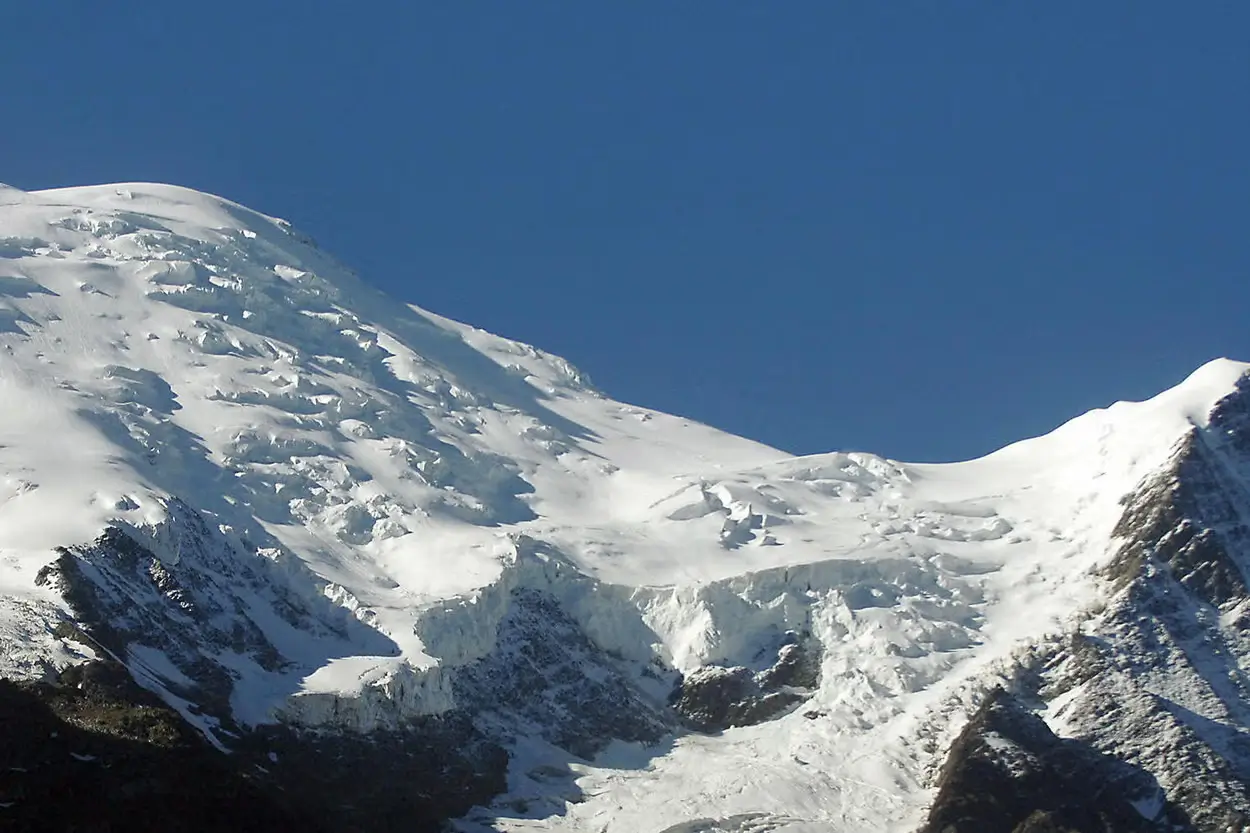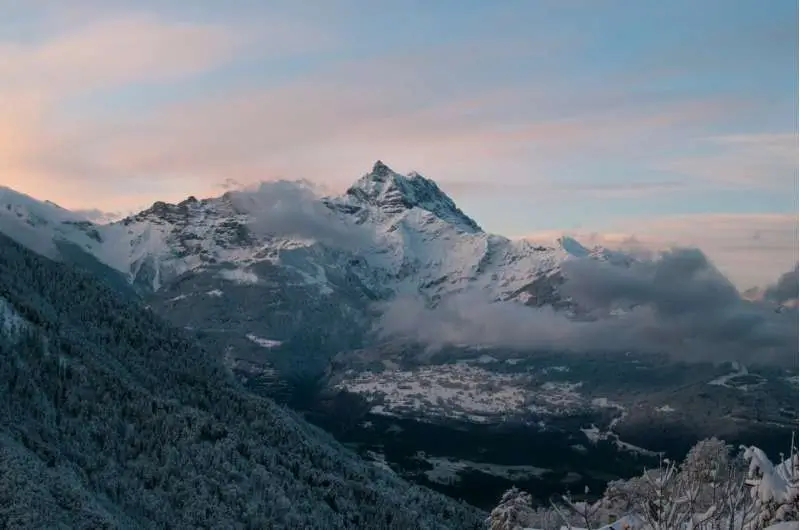Route Danger from Melting Mountains: Rising Rockfall Risk
For generations, classic summer climbs like the Eiger, Mont Blanc, and the Matterhorn were known for their majestic rock faces, technical beauty, and relative seasonal safety. But in recent years, something has shifted. Rockfall is no longer just a freak occurrence – it’s becoming a daily threat.
Across the Alps, Karakoram, and even parts of North America, high-altitude routes are changing fast. The culprit? Melting permafrost.

Mont Blanc, Ph: Getty
Table of contents
What Is Permafrost – and Why It Matters
Not Just the Alps: A Global Issue
Classic Routes, Rethought
Adapting in Real Time
The Bigger Picture: A Warming World
The Summit Is Still There – But the Game Has Changed
What Is Permafrost – and Why It Matters
Permafrost is the layer of frozen ground that acts as nature’s glue, binding rock faces together at high elevations. When it thaws – as it increasingly does during warmer summers – the structural integrity of entire mountainsides weakens.
As climate change raises alpine temperatures, this permafrost is thawing at alarming rates – in some areas, by 1°C per decade (Forbes). Without it, the mountains are literally falling apart.
From Hidden Hazard to Daily Risk
Climbers now report hearing more rockfall than birdsong on some routes. In 2022 alone, the French Alps saw a record number of rockfall events. The Matterhorn’s Hörnli Ridge, once a go-to summer objective, is now frequently closed due to safety concerns.
Researchers from institutions like the University of Zurich and Grenoble Alps University have monitored temperature spikes and confirmed that permafrost is degrading faster than predicted, particularly on south-facing routes.
Not Just the Alps: A Global Issue
While the Alps have become the symbol of permafrost instability, the phenomenon isn’t limited to Europe. In Alaska’s Denali National Park and Pakistan’s Karakoram Range, guides report unexpected collapses, loosened holds, and altered approach routes.
This isn’t about one mountain or region – it’s a new global climbing reality.
Classic Routes, Rethought
Some iconic climbs now require offseason attempts or complete reroutes. For example:
- The Goûter Route on Mont Blanc is increasingly risky in July and August due to rockfall in the Grand Couloir.
- Hörnli Ridge (Matterhorn) – frequent summer closures due to loosened rock (Reuters).
- The Eiger’s West Flank has seen major rockslides, altering traditional lines and complicating rescue operations.
- In the Dolomites, high summer ascents now demand alpine starts before sunrise to avoid afternoon instability.
Even infrastructure isn’t safe: alpine huts, cable car supports, and mountain observatories are at risk from shifting terrain (Le Monde).
Adapting in Real Time
Mountain guides, rescue teams, and route planners are now building permafrost considerations into daily risk assessments. Many recommend:
- Climbing earlier in the season (late spring) or opting for autumn windows.
- Starting ascents well before dawn, when the ground is still frozen.
- Using updated topos and local reports, as route conditions change week to week.
- Wearing helmets at all times, even during approaches.
A 2023 Swiss study based on tree-ring data even shows that rockfall rates have steadily risen since the 1980s, following global warming trends (University of Geneva).

The Bigger Picture: A Warming World
The increased danger is a symptom of something larger. Climate change is no longer a distant threat – it’s reshaping the mountains today. For mountaineers, this means balancing passion with heightened awareness and flexibility. Rather than abandon the peaks we love, we must learn to climb smarter, respect new risks, and listen to the evolving rhythms of the mountains.
The Summit Is Still There – But the Game Has Changed
For climbers, the draw of alpine summits remains eternal. But in this warming era, the challenge is no longer just the ascent – it’s understanding the mountain itself is in motion.
Each step now carries more weight, not just from gravity, but from a shifting planet beneath our boots.
